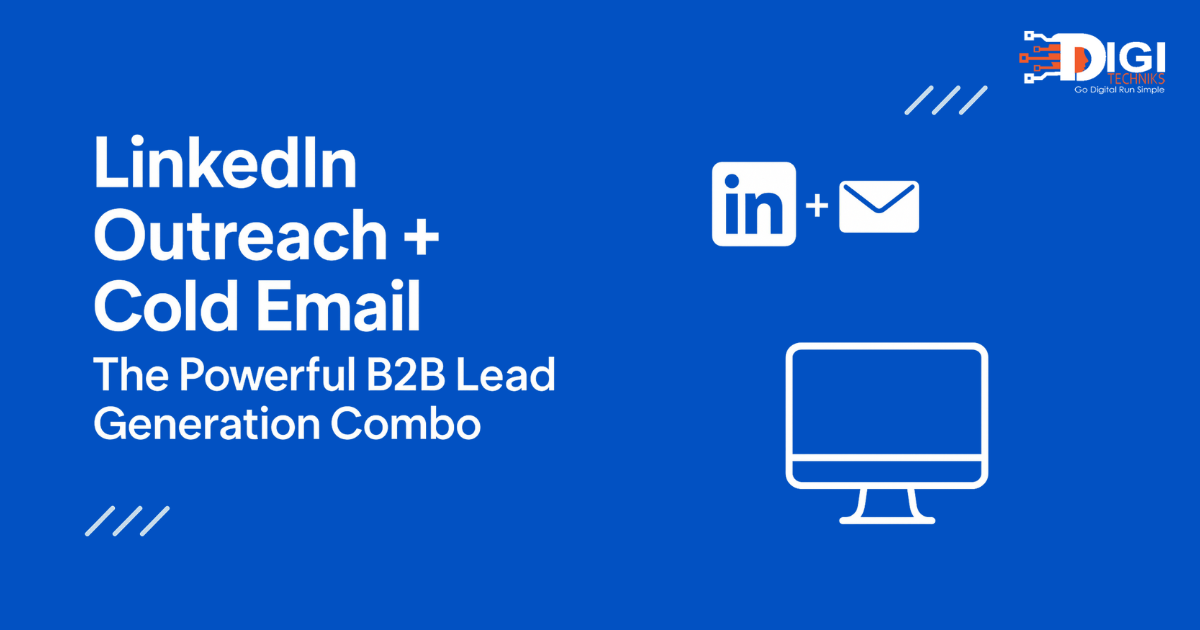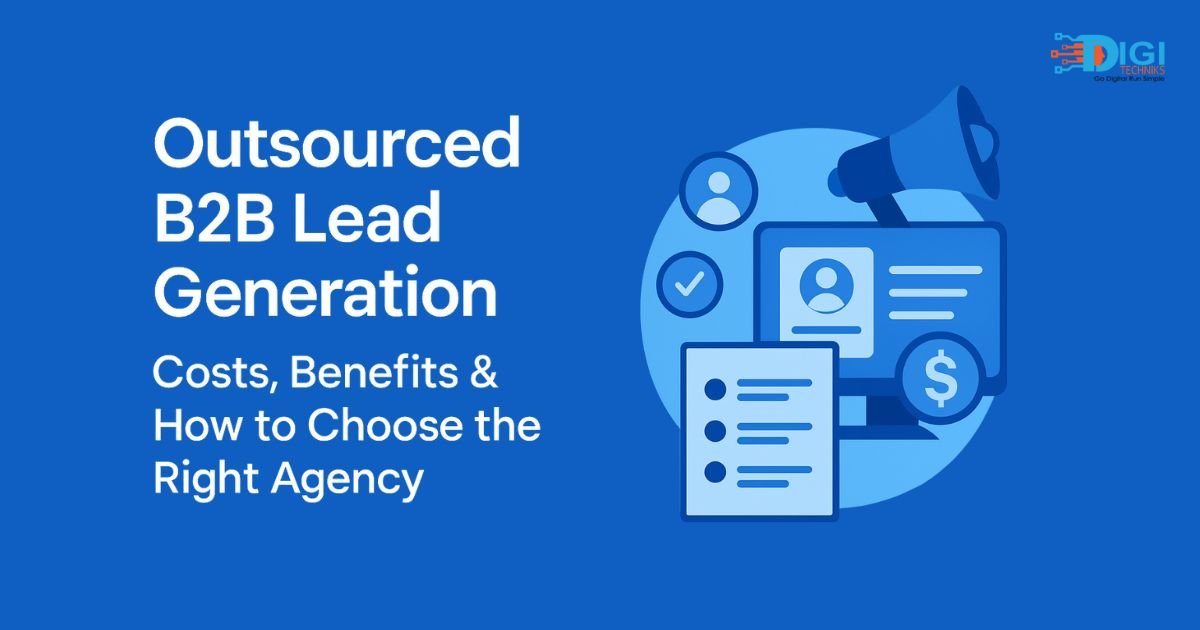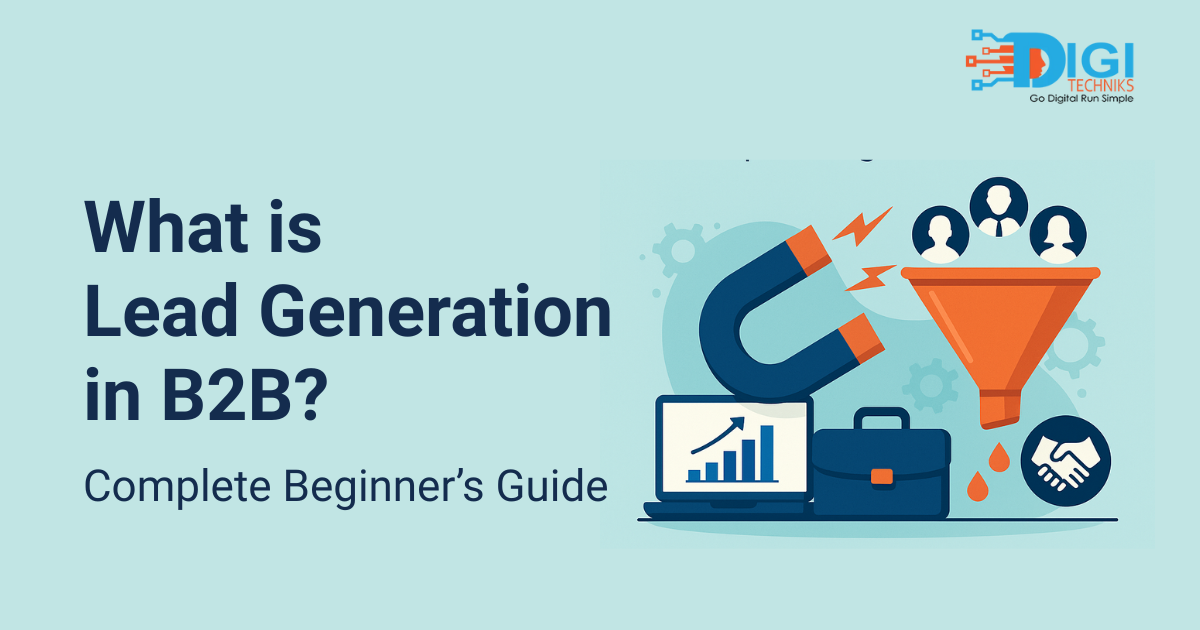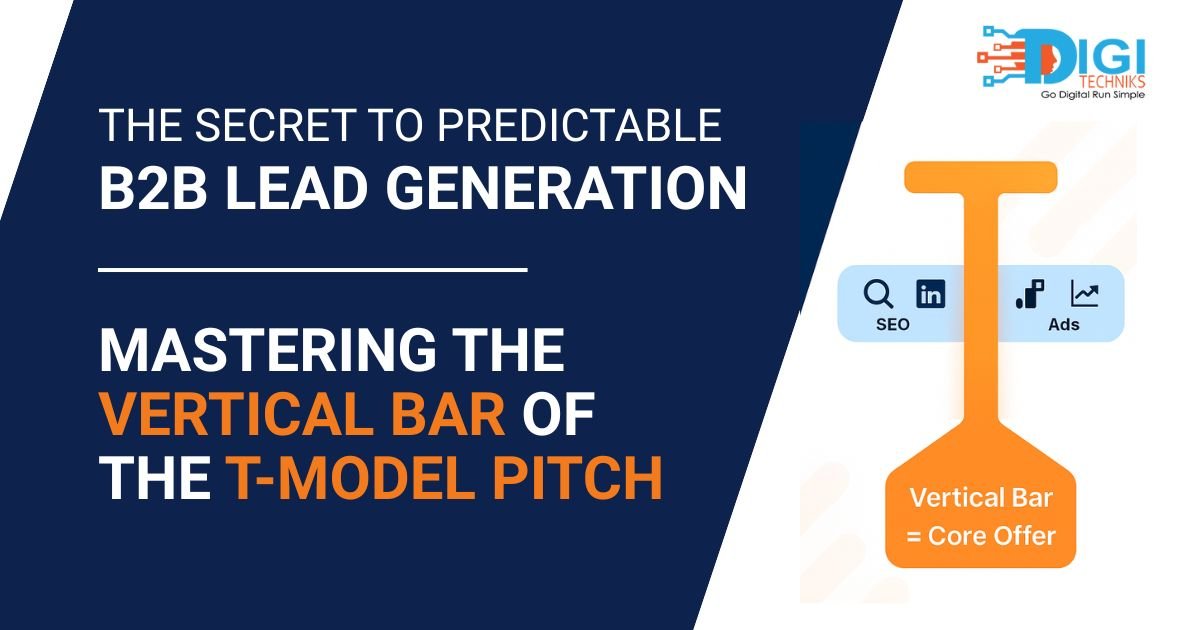
Why Your B2B Lead Generation Isn’t Converting
“You offer a lot… but no one’s biting?”
It’s the silent frustration of every sales consultant and B2B service provider. You’ve got multiple skills, multiple services, and multiple ways you can help prospects — but when you put it all into one pitch… the results are underwhelming.
-
Your cold emails get ignored.
-
Your LinkedIn DMs feel like noise.
-
Your meeting calendar stays empty.
The problem isn’t that you’re not good at what you do. The problem is that your message is overloaded, unclear, and forgettable.
In today’s hyper-competitive B2B space, the prospects you’re reaching out to don’t want to hear everything you can do. They want to hear the one transformation you’re best at delivering — the one that matters most to them right now.
That’s where the T-Model Pitch comes in. By focusing on a single vertical bar — your deepest area of expertise, your fastest path to ROI — you instantly give prospects a reason to trust you, reply to you, and book that call.
Key Takeaways:
- More services in your pitch ≠ more leads. One clear, transformational offer is what opens doors.
- In B2B lead gen, the vertical bar of your T-Model Pitch is what gets you remembered — and what gets you meetings.
-
To choose your vertical bar:
-
Anchor in your past client wins.
-
Solve the painful bottleneck your ICP can’t ignore.
-
Pick the fastest ROI transformation to pitch.
That’s the expertise sweet spot where cold emails stop getting ignored — and start booking calls.
-
-
Your vertical bar should speak to one urgent pain, promise one transformation, and deliver one measurable ROI. That’s what makes cold leads reply.
- A vertical bar is what gets you remembered, trusted, and replied to. The horizontal bar can wait — but without a vertical, you’ll never even get in the door.
- Use your T-Model Pitch everywhere your prospects see you—email, LinkedIn, website, and calls. Consistency creates authority, and authority creates conversions.
What Is the T-Model Pitch in B2B Lead Generation?
Think of the letter T. It’s more than a shape — it’s a framework for how you position yourself in the market.
-
The horizontal bar (—) represents your range of services — all the different things you can do for clients.
-
The vertical bar (|) represents your deepest transformational offer — the one thing you’re known for, the problem you solve best, the fastest ROI you can deliver.
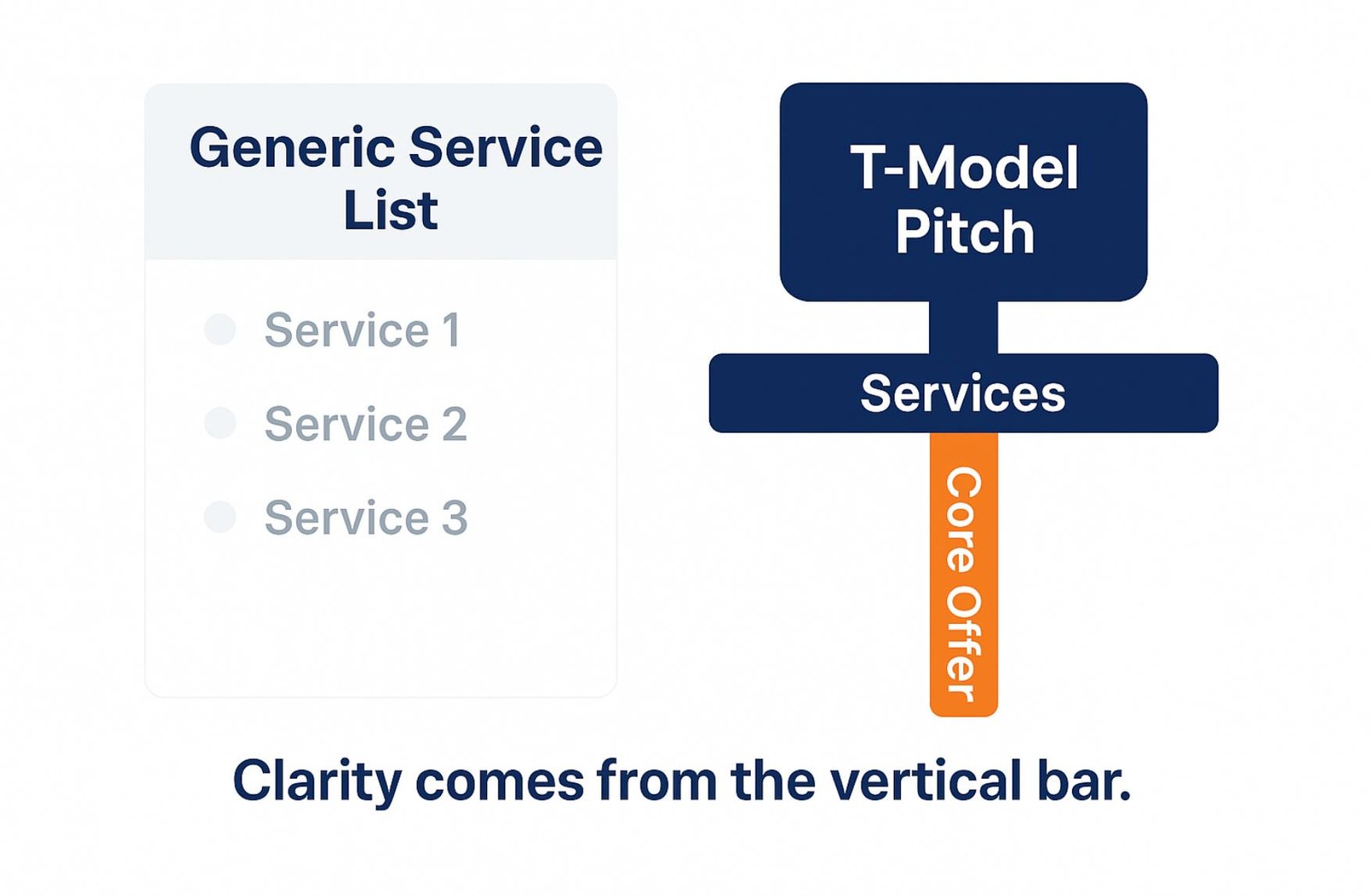 In outreach, the vertical bar matters more.
In outreach, the vertical bar matters more.
Why? Because in a crowded inbox or LinkedIn feed, no one remembers the consultant who “does it all.” They remember the one who says:
“We help B2B SaaS teams scale by building SDR systems that book 10–20 calls per month.”
That’s the power of the vertical bar: it gives your pitch trust, clarity, and curiosity — the three ingredients that turn cold outreach into real conversations.
-
Trust → You’ve solved this exact problem before.
-
Clarity → The prospect knows what you do in 8 seconds or less.
-
Curiosity → They want to learn how you’ll get them that outcome.
The horizontal bar (your breadth) will come later, once the relationship is built. But without the vertical bar, you’ll never get that first meeting.
In B2B lead gen, the vertical bar of your T-Model Pitch is what gets you remembered — and what gets you meetings.
How to Choose Your Vertical Bar (Your Deepest Expertise)
Choosing your vertical bar is the single most important decision in your outreach strategy. It’s the difference between being “another consultant in the inbox” and being the one prospect actually replies to. Here’s a simple 3-step process to lock in your vertical bar.
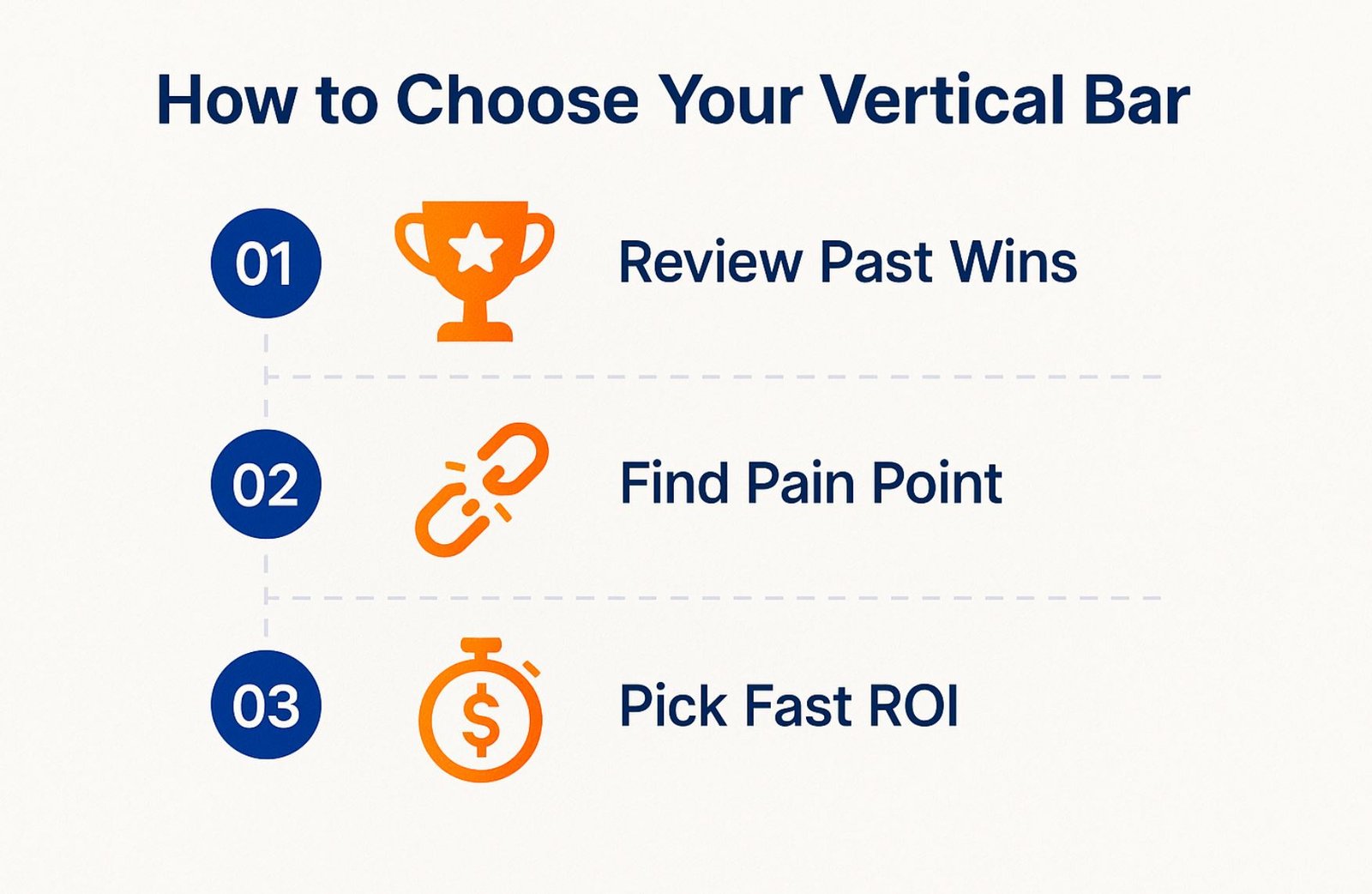
Step 1: Review Your Past Client Wins
Look back at the clients you’ve worked with. Which projects created the biggest transformation in the shortest time? Which ones generated repeat business, referrals, or testimonials?
Those are your clues. Your best “vertical” is often hidden in what’s already worked for you. If clients consistently thank you for one specific result — like building outbound systems, automating follow-ups, or restructuring sales pitches — that’s where your expertise runs deepest.
Tip: Past wins = your strongest proof. Your vertical bar should come from the outcomes you’ve already delivered with consistency.
Step 2: Find the Most Painful Bottleneck You Solve
Every ICP (ideal customer profile) has a bottleneck that’s keeping them awake at night. Maybe SaaS founders can’t scale appointments. Maybe IT firms are bleeding leads because no one follows up. Maybe agencies have inconsistent SDR output.
The vertical bar works because it speaks directly to this pain point. When your pitch says, “We help you fix X bottleneck,” the decision-maker knows you understand them. Pain creates urgency, and urgency drives replies.
Tip: If you want meetings, pitch the pain that prospects can’t afford to ignore.
Step 3: Pick the Transformation With the Fastest ROI
Your vertical bar isn’t just what you’re good at — it’s the transformation that delivers the fastest, most visible ROI.
Example: Instead of saying “we improve sales processes,” a stronger vertical is “we help agencies book 10–15 qualified calls in 30 days by restructuring their pitch and follow-up system.” It’s measurable, it’s time-bound, and it feels achievable.
Tip: The best vertical bar = a promise that feels low-risk and high-reward. That’s what makes prospects lean in and say, “Tell me more.”
Read more: Not Getting Qualified B2B Sales Leads? Here’s What Might Be Going Wrong
4 High-Converting Vertical Bar Examples for Sales Consultants
If you’re struggling to define your vertical bar, here are four examples that have consistently converted cold outreach into meetings across SaaS, IT, agency, and coaching industries.
Example 1: SDR Team Setup for B2B SaaS
-
Pain: SaaS founders rely on founders or AEs to do outbound. No SDR structure = inconsistent pipeline.
-
Vertical Offer: Build and train an SDR team that books meetings on autopilot.
-
Outcome: Predictable 10–20 calls per month without founder-led outreach.
Pitch: “We help B2B SaaS firms with sales ops and automation—but where we go deepest is building SDR teams that consistently book meetings.”
Example 2: Follow-up Automation for IT Firms
-
Pain: IT service providers generate leads but lose 40–60% because no structured follow-up system exists.
-
Vertical Offer: Set up multi-channel follow-up (email, LinkedIn, WhatsApp) with automated cadences.
-
Outcome: 2–3x higher conversion from existing lead pool.
Pitch: “We help IT firms with end-to-end outreach, but where we go deepest is automating follow-ups so no lead goes cold.”
Example 3: Appointment Scaling for Agencies
-
Pain: Agencies depend on referrals and struggle to scale outbound consistently.
-
Vertical Offer: Appointment-setting system combining cold email + LinkedIn.
-
Outcome: 15–25 qualified calls/month → pipeline independence from referrals.
Pitch: “We help agencies with sales funnels and content—but where we go deepest is setting up outbound systems that scale appointments predictably.”
Example 4: Sales Pitch Restructuring for High-Ticket Coaches
-
Pain: Coaches have programs worth $5k–$20k but can’t close because their pitch sounds generic.
-
Vertical Offer: Restructure sales pitch into a pain-ROI framework that resonates.
-
Outcome: Higher close rates, fewer objections, more premium enrollments.
Pitch: “We help coaching businesses with client acquisition—but where we go deepest is restructuring sales pitches so high-ticket offers close faster.”
At Digitechniks, we’ve helped sales consulting firms across SaaS, IT, and agency verticals craft their T-Model Pitch and deploy it inside LinkedIn + cold email systems. The result? Sharper positioning, higher reply rates, and a predictable flow of booked meetings.
Takeaway: Your vertical bar should speak to one urgent pain, promise one transformation, and deliver one measurable ROI. That’s what makes cold leads reply
Why One Vertical Bar Beats a Generic Service List
When you tell prospects “we do everything”, here’s what they actually hear:
-
You’re not specialized.
-
You’re not focused.
-
You’re just another vendor blending into the noise.
That’s why generic service lists don’t convert — they confuse instead of compel.
1. One Vertical Bar Builds Memorability
Prospects see dozens of pitches daily. The ones they remember are those tied to a specific transformation. A SaaS founder won’t recall a consultant who says “I do sales consulting.” But they will remember the one who says:
“I help SaaS teams book 15 calls a month by setting up SDR systems.”
2. One Vertical Bar Demonstrates Positioning Clarity
A clear vertical bar signals that you’re an expert in solving one bottleneck. That clarity makes you credible. Once you’re trusted for one thing, the door opens to cross-sell everything else in your horizontal bar.
3. One Vertical Bar Increases Reply Rates
Cold email and LinkedIn campaigns thrive on specificity. A pitch that names a pain + transformation + ROI gets replies, while generic service lists are ignored. In our campaigns at Digitechniks, vertical-bar-first outreach has consistently produced 3–5x higher reply rates than “we do it all” messaging.
4. One Vertical Bar Turns Outreach into Conversations
When your pitch is broad, prospects feel they’re being sold to. When your pitch is sharp, they feel you understand them. That shifts the tone from “vendor pitching services” → “advisor solving problems.”
A vertical bar is what gets you remembered, trusted, and replied to. The horizontal bar can wait — but without a vertical, you’ll never even get in the door.
The Secret to Predictable B2B Lead Generation
-
Why lead gen fails: Overloaded service lists confuse prospects → low replies.
-
Solution: Use the T-Model Pitch.
-
Horizontal bar (—): Range of services (breadth).
-
Vertical bar (|): Deepest expertise (transformation with fastest ROI).
-
-
How to pick your vertical bar:
-
Review past client wins.
-
Solve the most painful bottleneck.
-
Pitch the transformation with fastest ROI.
-
-
Examples: SDR setup for SaaS, follow-up automation for IT firms, appointment scaling for agencies, sales pitch restructuring for coaches.
-
Why it works: Builds clarity, trust, and higher reply rates → turns cold messages into warm meetings.
-
Next Step: Book your free T-Model Pitching Strategy Session with Digitechniks to craft your vertical bar and generate 10–30 qualified calls/month.
Where to Use the T-Model in Your B2B Lead Gen
The T-Model Pitch isn’t just a theory—it’s a plug-and-play framework you can drop into every part of your outreach funnel. When you keep your vertical bar front and center, your messaging becomes clear, repeatable, and persuasive across channels.
Here’s where to use it:
Cold Email Outreach
-
Subject Line: Lead with the transformation.
Example: “Cut reporting time from 8 hours to 20 minutes”
-
Intro Sentence: Frame your vertical bar clearly.
“We help IT firms with ERP, automation, and analytics—but where clients see the fastest ROI is in automated follow-up systems that recover lost leads.”
-
CTA: Keep it low-resistance (demo, free audit, quick call).
LinkedIn Outreach – Connection + Follow-Up Messages
-
Connection Note:
“Hi [Name], I work with SaaS founders to scale SDR teams that book 15+ calls/month. Would love to connect.”
-
Follow-Up: Highlight your vertical bar instead of dropping a service list.
“We’ve seen outbound campaigns 3–5x response when focused on one sharp vertical offer. Happy to share how we structure this.”
Your Landing Page Copy
-
Headline: “We help [ICP] with [breadth], but go deepest in [vertical offer].”
-
Hero Section: Show the transformation first, then add supporting services further down.
-
CTA Buttons: Reinforce the ROI (“Book a call → Get 10–20 qualified meetings/month”).
Sales Discovery Call Intro
-
Frame yourself upfront:
“We run outreach systems for agencies, but where we go deepest—and where our clients see the fastest ROI—is in appointment scaling that delivers 20+ calls per month.”
-
Sets clarity → builds authority → makes the rest of the conversation flow.
When we deploy the T-Model Pitch across email, LinkedIn, and landing pages together, response rates don’t just add up—they compound. Prospects see the same sharp offer everywhere, which creates memorability and faster trust.
Use your T-Model Pitch everywhere your prospects see you—email, LinkedIn, website, and calls. Consistency creates authority, and authority creates conversions.
Final Thoughts: Go Deep to Go Wide
In B2B lead generation, the difference between being ignored and being in demand comes down to one thing: clarity.
If your pitch sounds like everyone else’s—“we do sales consulting, automation, outreach, funnels…”—you’ll get the same result as everyone else: silence. But when you lead with one vertical bar, one sharp transformation that prospects can’t ignore, you instantly stand out.
-
You stop sounding like a vendor.
-
You start sounding like a partner who understands their pain.
-
You earn the trust that turns cold messages into warm meetings.
And here’s the best part: once prospects trust you for one vertical outcome, they’ll ask, “What else can you do?” That’s when your horizontal bar (your range of services) kicks in.
So remember: go deep to go wide. Start with one clear outcome, and you’ll unlock conversations that let you sell the rest.
Takeaway: Depth creates trust. Trust creates opportunity. Opportunity unlocks breadth.
Ready to Build Your T-Model Pitch?
Here’s the truth: your next 20 clients won’t come from doing more outreach. They’ll come from doing clearer outreach.
The fastest way to clarity? Your vertical bar.
At Digitechniks, we specialize in helping sales consultants, SaaS providers, IT firms, and agencies craft their vertical pitch, plug it into cold email + LinkedIn systems, and turn it into a predictable meeting engine.
✅ In your Free T-Model Pitch Strategy Session, we’ll help you:
-
Define your vertical bar (your most valuable offer).
-
Write a crisp, compelling pitch sentence that gets replies.
-
Plug it into a cold outreach funnel that delivers 10–30 qualified calls per month.
📩 Don’t waste another month sending noise.
You can also explore our full guide on Zero‑Budget B2B Lead Generation for organic strategies that complement Cold Email Outreach.
FAQs
What is the vertical bar of the T-Model Pitch?
It’s your deepest area of expertise — the one transformational outcome you’re best at delivering. In outreach, this is what gets attention and builds trust.
Why does focusing on one offer work better than listing all services?
Because B2B buyers remember specialists, not generalists. A sharp vertical offer creates clarity, trust, and higher reply rates.
Can small consulting firms use the T-Model Pitch?
Yes. In fact, small firms benefit the most because it helps them stand out against larger competitors by showcasing niche expertise.
How do I choose my vertical bar?
Review past client wins, find the most painful bottleneck your ICP faces, and pitch the transformation with the fastest ROI.
How can Digitechniks help me with this?
Digitechniks helps SaaS, IT, and consulting firms define their vertical bar, craft cold email + LinkedIn outreach messages, and set up systems that generate 10–15 meetings per month.

Sharan Kulkarni
Sharan Kulkarni is a B2B Lead Generation Specialist and author of ROI Decoder, with 10+ years’ experience helping SaaS, IT, and service firms generate predictable qualified leads. He leads Digitechniks’ outreach strategies across LinkedIn, cold email, and SEO. Connect with Sharan on LinkedIn

